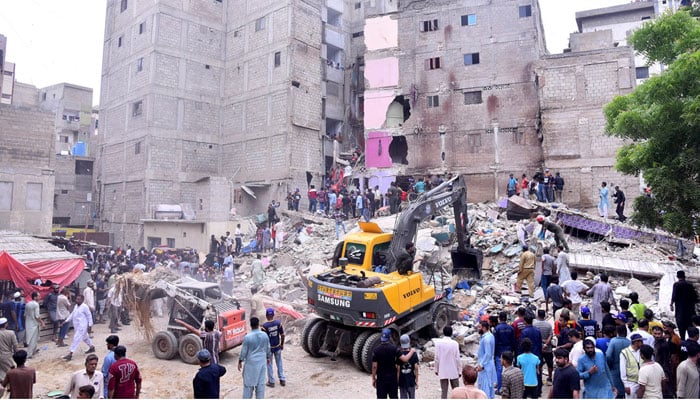The death toll in the Karachi building collapse has risen to 16 after rescue teams recovered two more bodies from the rubble. The five-storey residential building in Lyari’s Baghdadi area crumbled on Friday, leaving dozens trapped under the debris. Search operations continued through the night, with heavy machinery and Trapped Person Locator devices being used to detect survivors. Authorities estimate that 10-12 people may still be buried, while three injured victims are undergoing treatment.
The collapsed building had been declared unsafe three years ago, with evacuation notices issued as recently as June 2025. Despite warnings, residents remained inside, leading to the tragic incident. Officials disclosed that 22 other highly dangerous buildings in Lyari have been evacuated, but hundreds more across Karachi remain occupied. The Sindh Building Control Authority (SBCA) stated that utility disconnection notices were ignored, highlighting systemic failures in enforcement.
Karachi Commissioner Syed Hassan Naqvi urged residents of unstable buildings to relocate voluntarily, acknowledging the challenges in forced evacuations. A high-level committee has been formed to investigate the collapse, with a report expected in three days. Meanwhile, the SBCA revealed that 578 buildings in Karachi are marked as unsafe, with District South alone accounting for 456 of them. Other districts, including Central and Keamari, also face significant risks.
Experts warn that mere notices are insufficient—the government must ensure evacuations and provide alternative housing to displaced families. This incident is not isolated; Karachi has seen repeated building collapses since 2017 due to poor construction and weak oversight. With hundreds of unsafe structures still standing, authorities must act swiftly to avoid further loss of life. The tragedy underscores the urgent need for stricter building regulations and effective urban safety measures.


